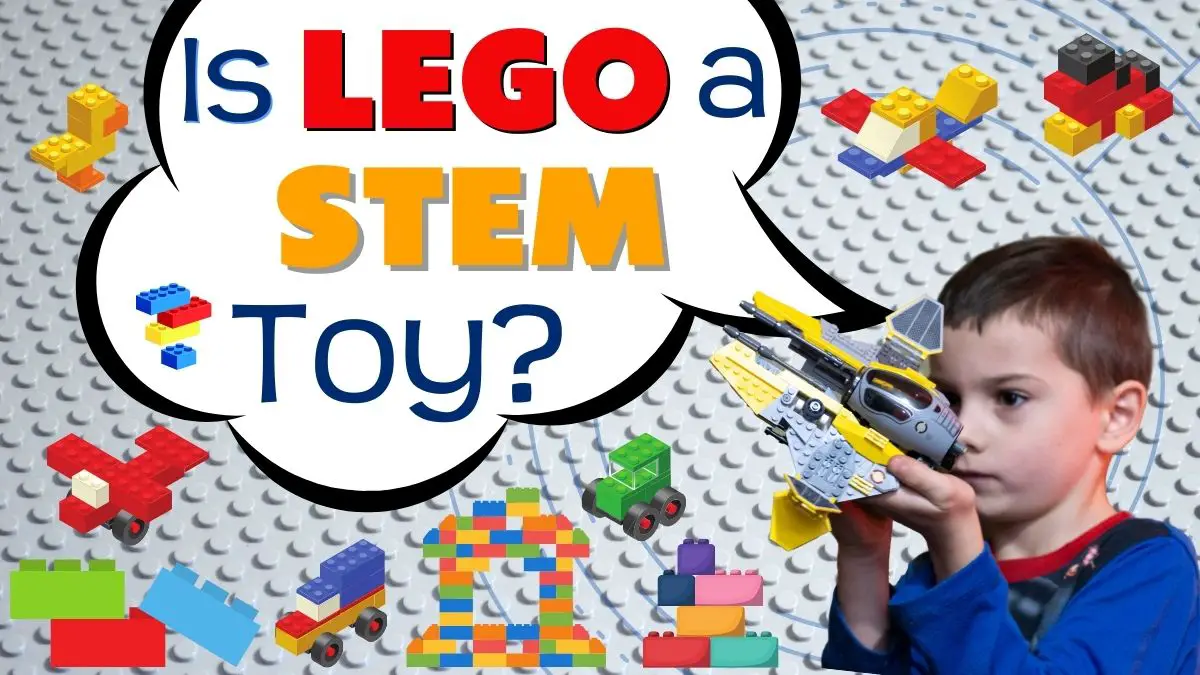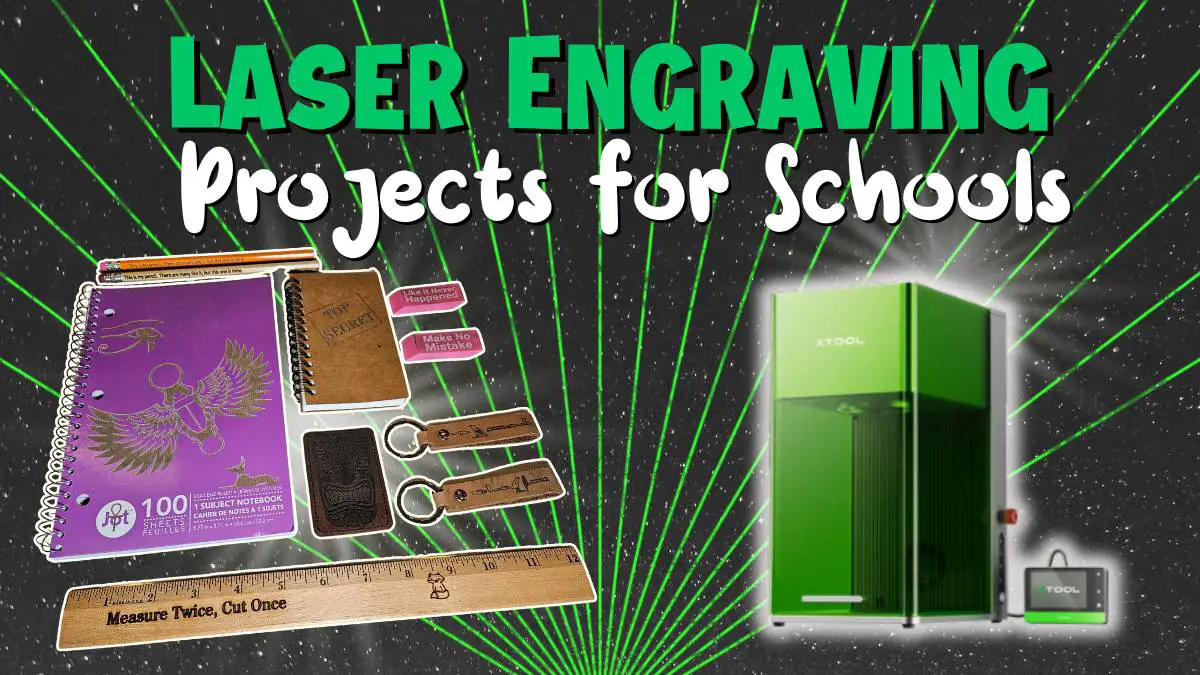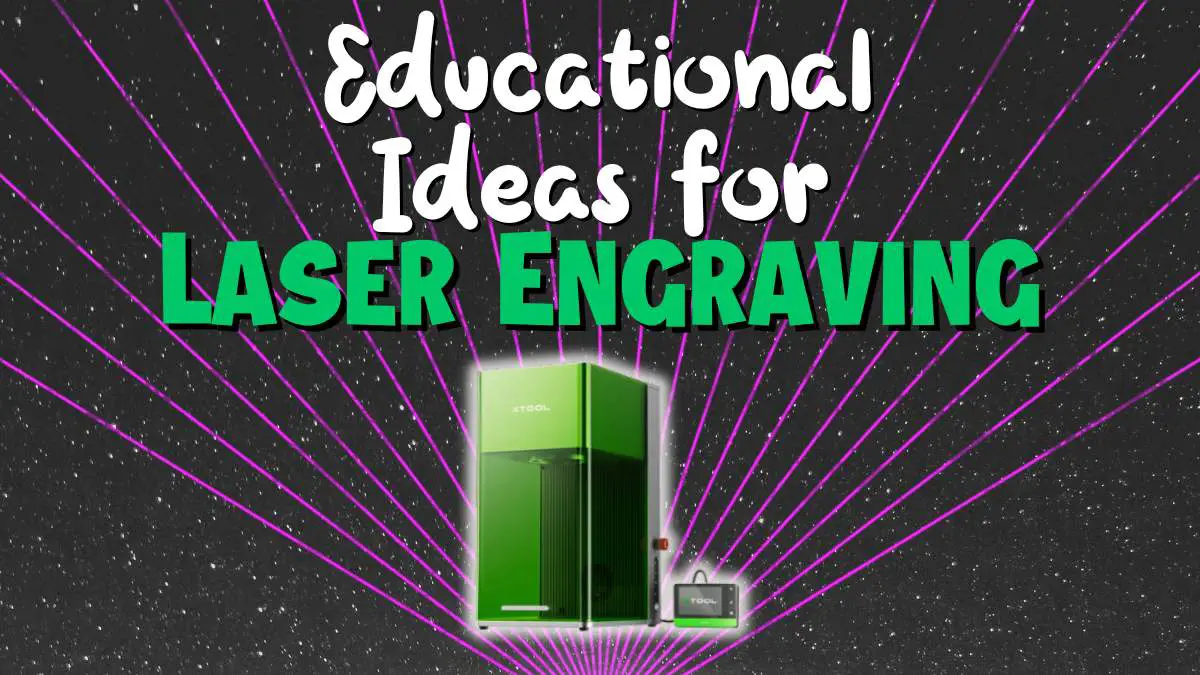STEM education has been a hot topic in recent years. Educators, governments, and CEOs of major companies encourage parents to get their children interested in STEM, even as babies. This has led to parents stressing if their children are playing with suitable toys. Take LEGO bricks: they’re lots of fun, but are LEGO STEM toys?
Yes, LEGO bricks are STEM toys. LEGO has many products that directly target specific STEM skills, such as programming and robotics, and even a bucket of random LEGO bricks is a STEM toy. The core skills of STEM are discovery and problem solving, exactly what playing with LEGO teaches a child.
STEM stands for Science, Technology, Engineering, and Math. Because of this, many parents think a STEM toy has to be labeled “technology” or “math” to be STEM. The root of STEM is often provided in foundational toys, such as the original LEGO building bricks. This doesn’t mean LEGO robotic kits are not wonderful; they are fabulous. But the basic LEGO bricks are often undervalued.
LEGO and STEM: Thinking Beyond the Acronym
It’s easy to take things too literally in the world of soundbites and social media posts that are 280 characters or less. This is true for the acronym behind STEM and what it represents. We know that STEM stands for four words: Science, Technology, Engineering, and Math. This has caused many to forget the plethora of key skills and components that make up the foundation of STEM.
LEGO is a toy that sparks curiosity and inquiry. As a child (or a group of children) dig through a bucket of LEGO bricks and try to build, the toy encourages discovery, design, problem-solving, creativity, critical thinking, and invites collaboration. All of these things are at the heart of STEM.
Discovery comes first when a child is born. As soon as they talk, “Why?” becomes a favorite question. As parents, we’ve heard “but why?” so many times we became numb to it. But STEM needs people to keep asking, “ Why?” well into adulthood.
LEGO: How Children Learn
Children learn best through play. Article after article after article demonstrates play is crucial to a child’s development. Thus learning through play is the foundation of many educational systems, including Montessori and Waldorf. LEGO knows the value of play in a child’s development too, which is why the LEGO Foundation has an entire white paper on the subject.
The joy of playing sparks children’s natural curiosity. Playing with building blocks, including LEGO, are part of a natural developmental phase and is great for STEM skills. As kids stack bricks and try to build new structures, they are making patterns, discovering what worked, what didn’t, and how to develop solutions to creating bigger and better designs, all while improving motor skills and spatial awareness. Innovation, testing, problem-solving skills, and taking things apart to try again are all part of playing with LEGO and, later on, crucial elements for a successful STEM career.
LEGO Kits for STEM Learning
Purists will argue that all you need are a bucket of LEGO, and that buying LEGO kits can stunt learning by having everything laid out. But that is simplistic. One of the key components of teaching children to read, write, and create their own stories is reading to them from books already written. Also, when learning a programing language, one of the key steps in the process is going through tutorials and following instructions.
The debate shouldn’t be “free play” vs. “kits” but how to use them together. Of course, exploring and playing without instructions can and should be encouraged. But that doesn’t mean kits don’t have a place in play-learning-fun too. It’s about variety rather than this or that.
Take this 3in1 Fire Dragon Kit, for example. The kit comes with the pieces and instructions to make a fire dragon, saber-toothed tiger, and a scorpion. The same bricks are being used in different ways, such as a claw becoming the stinger on a scorpion’s tail. These kits demonstrate new ways to use pieces and rethink their possibilities.
After a kit’s instructions have been followed, a parent, teacher, or guardian should encourage the child to experiment. Could a child make a fourth creature of their own invention with the pieces? What about using LEGO from their general bucket to change the colors of the dragon’s wings or the sabretooth’s legs? Challenge the kid to make “buddies” for their scorpion.
Our son loved this “STEM ROBOT Creator Kit” (and yes, it’s an off-brand LEGO knockoff, though that didn’t dampen his enjoyment.) He loved following the included instructions and building all the little construction vehicles. It wasn’t long before he was taking them all apart and building new things of his own creation.
There’s also joy in getting a bucket of LEGOs with no instructions or direction. Here’s what happened in our house when each of the kids received a bucket of bricks as a gift:
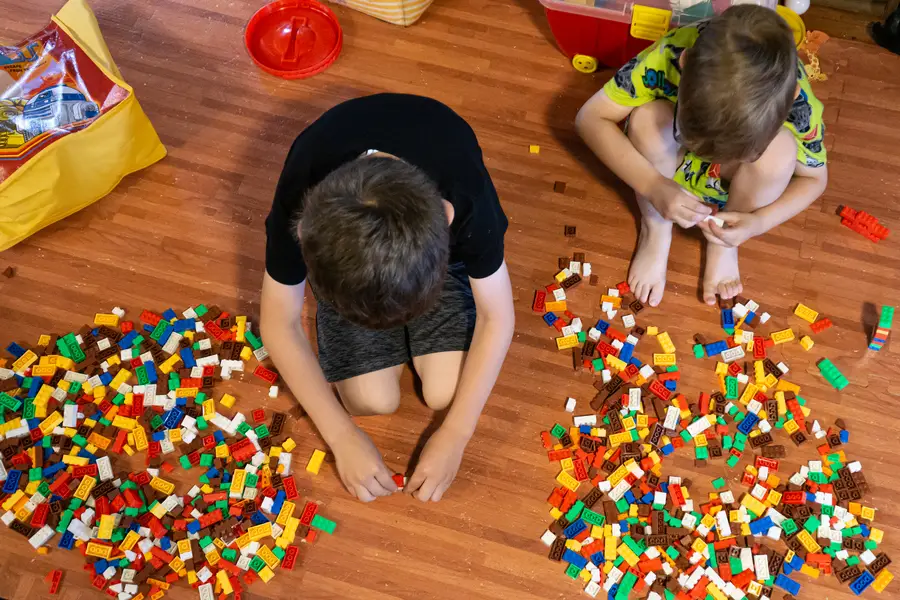
LEGO also makes kits aimed explicitly at STEM skills.
Check out our post on STEM Activities with LEGOs for ideas and inspiration for home, homeschool, or classroom.
LEGO STEM Toys, Programming, and Robotics
LEGO now has a whole line that is specifically branded as STEM Toys. This is a wise move from a marketing standpoint, as so many parents feel obligated to buy toys framed as specifically STEM. But while research does support that children can and do learn STEM concepts from toys, there is nothing to support that toys specifically marketed as STEM are better.
This isn’t to say that the toys in the LEGO STEM are not fun, engaging, and great toys. There is plenty in the LEGO STEM Toys line that any child would be lucky to own. But they are not necessarily better toys than other LEGO products. However, if you or your child specifically wants to use LEGO to learn programming and robotic skills, then yes, the LEGO STEM Line is the way to go.
For example, check out the Klutz Lego Gear Bots. While aimed for 8-12-year-olds, plenty of adults would get a kick out of it. The eight models are a Heli-cact-er, Yeti, DJ Bubbles, Head Banger, Lounge Lizard, Pterodactyl, Monster Mayhem, and Robo Game Show.
Lots of fun, quirky critters here. There are different sized gears and mechanisms to build simple machines. There are directions for 8 different configurations. The boys loved the monkey, and I thought the chameleon was interesting.
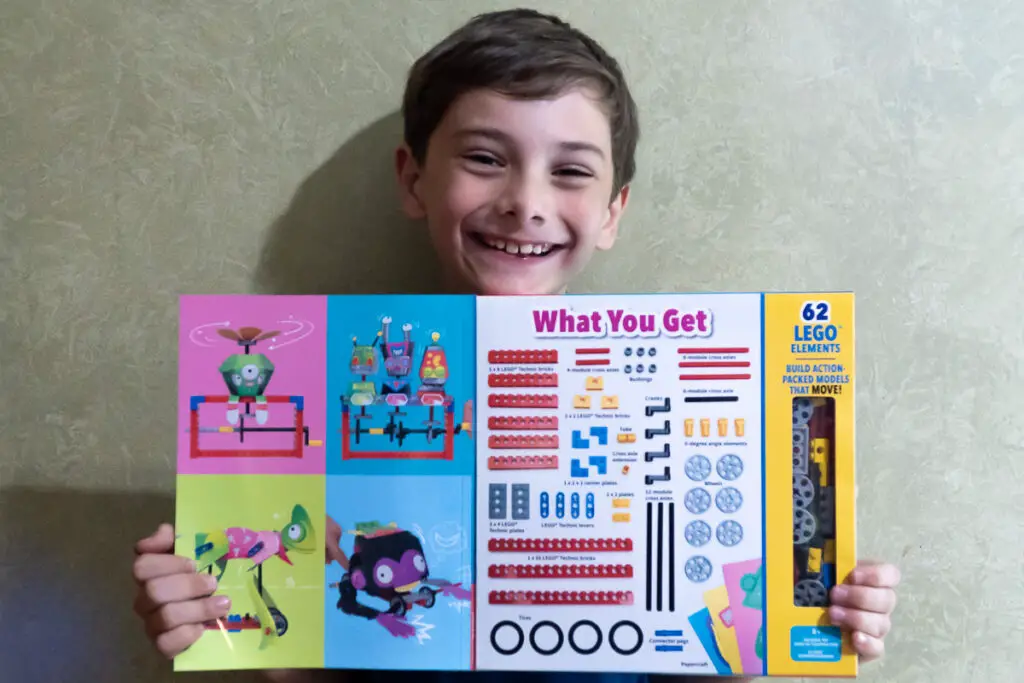
While the kit is fun, it also teaches physics, such as how gears transfer kinetic energy. It’s just more fun than a lot of dry physic textbooks, and fits in with STEM’s hands on learning approach. The instructions take the builder through the process of making a working machine, demonstrating how axles, cams, and cranks work together to create movement.
As children learn and grow, they will want more complex challenges. This LEGO Creator Expert Roller Coaster is an entertaining challenge. The recommended age says sixteen, but we find these great projects for a child to do with an adult. Just remember, adults – we know it is fun but let the child take the lead.
It is also essential to let a child make mistakes when doing kits because that’s where real learning happens. No, letting them get too frustrated isn’t great, but accidents can produce amazing new things. After all, one of the most remarkable “accidents” in the world is Penicillin, a game-changer in medicine.
Related Post: Find out how mistakes and “failure” are essential and drive innovation.
LEGO for Programming and Robotics
There are many, many, many ways to teach a kid programming, and you do not need to use LEGO products to do it. That said, LEGO is an incredibly accessible and fun way to teach engineering, programming, and robotic skills.
In addition to the STEM Toys products, LEGO has also made its LEGO Education line now available for home learning. “A Systematic Review on the use of LEGO Robotics in Education” can be read in full on ResearchGate.
The LEGO coding products are aimed at a variety of age groups, starting as young as two. The DUPLO range, for toddlers and preschools, has many options, including Coding Express. The product comes with 234 bricks, and the four main areas of the product are Journeys, Characters, Music, and Math. Children learn early coding skills, sequencing, and looping.
In the age 7+ bracket, there is the 280 piece set called LEGO Education WeDo 2.0 Core Set. There are basic programming skills involved in this product while also working on modeling and design solutions while being a hands-on way to learn certain scientific concepts. Schools not only use these types of products but programs such as Young Engineers do too.
At the 10+ range, there is the LEGO Education SPIKE Prime Set, which uses drag-and-drop coding, and promotes engineering and computer science skills. The motors and sensors allow children to be more creative and try out more complex designs than the WeDo set.
But the big product every child wanted was the LEGO MINDSTORMS EV3, which is now retired. It has been replaced by Robot Inventor, which integrates with the SPIKE line. An excellent and comprehensive review of the Robot Inventor can be read here.

Feedback from Kids
While I’m looking forward to getting our kids some of the more advanced sets they’re not quite ready for them yet. Legos can be expensive (how much for a box of plastic?!), and the more advanced kits come with an advanced price. I want to make sure when our kids are ready, that the toys are worth the investment. We asked some friends with kids a bit older how they liked and interacted with some of the robotics and programming kits.
We got some great, as well as some critical, feedback. For the most part, the kids found them fun, and parents appreciated how much problem-solving goes into creating a functional robot/project. The products do have limitations, from sensor capabilities to cable lengths, that can cause frustration. On the other hand, that’s how the real world works, too – so this can be a valuable life lesson.
Until recently, LEGO robotics were limited to drag and drop coding, also known as block coding. Drag and drop is an incredibly accessible way to code. Like the name suggests, users drag the code blocks they require and “drop” them into place. It is fun and beautifully illustrates the essence of how coding works.
For early programmers, coding instructions with blocks was fairly intuitive and easy to pick up. What can be an advantage can also be a drawback; if your child truly embraces programming and has some experience, the drag-and-drop nature can feel “dumbed down,” and the child may crave the freedom to type in their own code.
LEGO is listening and bringing Python into the mix for Robot Inventor. Python is a text-based language and one of the recommended “first” ones to learn for those ready to start writing lines of code.. This allows the robotic toy to progress with young coders’ development. A fantastic move by LEGO and one that will keep the toy relevant for many more years.
Related Post: Check our post on what’s the right age to start coding to learn more about syntax vs block based coding.
So, how did the casual and serious programming kids do?
The child with a casual interest in programming was satisfied with Python and, to be honest, is quite happy to play with a LEGO drag-and-drop system. For this child sets like the SPIKE and Robot Inventor were perfect.
For the child that is heavy into programming, Python was merely a gateway. This kid sped ahead, seeking out new languages to learn on their own, and has moved on to Rust. For this child, their LEGO MINDSTORMS MV3 fun, though was played with as a passing phase. Programming was more of a passion than Lego in this case If this was the only kid in the family, it may have not been worth it.
The takeaway – yes, the Lego robotics and programming kits are fun. Like many toys, it depends on the kid. Some toys get played with a few times and are doomed to be buried in the closet. Some toys see so much use they are worn out. At least I know that if our boys don’t play with them, I will. (hey, LEGOs aren’t just toys for kids)
STEM LEGO Programs
There are STEM programs that use LEGO for their base. Some are directly affiliated with LEGO; others simply use LEGO products for their own program.
Bricks 4 Kidz
Bricks 4 Kidz is a STEM afterschool that uses LEGO as the base for its lessons. The projects are fun and encourage using robotics to learn concepts such as friction. They promote teamwork and learning to design, test, and modify.
Young Engineers
Young Engineers is similar to Bricks 4 Kidz. It’s an afterschool program that teaches science and engineering concepts through LEGO kits, including mechanical movement. As the children advance, they eventually reach the robotics stage and begin learning drag and drop coding.
Snapology
Snapology offers both afterschool and in-school programs. They use LEGO for much of their program, along with other building toys such as K’Nex. As with the other two, it is a hands-on STEM program to expand learning through fun.
World Robot Olympiad
World Robot Olympiad is a non-profit organization that hosts tournaments in over 85 countries. They have many challenges and categories. However, their competitions Robo Mission and Robo Sports, are LEGO-based. For example, Robo Sports allows teams to use MINDSTORMS NXT, EVE, SPIKE PRIME, or Robot Inventor.
First LEGO League
Kids often respond better to programming and robotics if there is an end goal or a challenge. LEGO knows this and thus provides FIRST LEGO League, which is a competition that spans the globe. Children are put into teams for their age groups. Kits are obtained, and a theme will be announced. The children then must build a robot to perform several challenges while doing an independent project on the theme.
On competition day, the teams and their coaches arrive at the venue. These are placed in certain catchment areas. If you live in a city, it’s pretty easy. If you live in a small town, you might be facing a five-hour drive, as we did. The robot’s performance will be demonstrated in a series of rounds, trying to do the tasks within a set time.
The children will present their robot to a panel and explain their design process, including challenges and how they worked as a team. The children will also have to give a presentation to a panel that relates to the theme.
Feedback on FIRST LEGO League
Our kids aren’t quite old enough (though very interested,) so we consulted a coach about their experience on FIRST LEGO League. They felt the experience was overall positive but not perfect. They thought it was great to see the children work towards a goal using collaborative skills such as brainstorming and problem-solving.
The snags that happened were good examples of what occurs in the workforce. Companies often don’t have the latest technology, and robotics always deals with variables that are not obvious until the testing stage. Thus, the frustrations their team experienced while preparing for the competition were a great reflection of what happens to professionals when trying to design and test products.
The biggest drawback to the competition day was that they were unprepared for the full experience. They had no idea it would be so loud and have flashing lights. This might be a venue decision rather than the whole league. But they had two Autistic children on the team, along with one who had ADD.
They thought if they’d been more prepared, perhaps it would have gone easier. But given the children involved were all part of mainstream schooling and did not typically require sound-canceling headphones, stimming tools, or safe spaces to regroup, they hadn’t anticipated the stimulation challenges. Even the run-of-the-mill introverts were struggling, especially with the flashing lights.
Their overall impression was energetically positive, and they recommend FIRST LEGO League: It was wonderful for the kids to meet other children that shared their interests. Also, meeting adults in various STEM careers was priceless, especially for children who do not live in cities. The competition was well run, and, overall, the children learned a lot, well beyond robotics.
Wrap Up – Is LEGO a STEM Toy?
LEGO is a STEM toy. From the joy and exploration that can be found in a humble bucket of bricks to the advanced robotics kits, LEGOs are accessible and fun. LEGOs help develop a wide range of early child development skills, creative thinking, design, all the way to some advanced STEM skills with some of the more technical kits.
However, parents should not feel pressured to buy the pricier options. Yes, they can be a blast and introduce skills such as programming, but it isn’t a must for the casual builder. Some kids are happy with a bucket of bricks or their favorite spaceship. If you have the cash or your kid really wants one, the advanced kits can be worth the investment – go for it. Although, do remember to let the kids have a turn.
Check out some of our other LEGO posts: Cool LEGO Machines, Best Space LEGO kits, and guess what tops the list of our favorite STEM toys. Also, be sure to download a copy of our FREE Lego Challenge Cards and find out what to do with your LEGOs after they’re built.
Are there any STEM toys under $100 that are similar to LEGOs?
Yes, there are various stem toys under $100 that are similar to LEGOs. Brands like K’Nex, Meccano, and Magformers offer a wide range of building sets that promote creativity and critical thinking skills. These stem toys under $100 are affordable toys kids who love to build and play.

